When you think of orange fruits you think of your typical common orange and other orange varieties such as tangerines and clementines.
However, besides citrus fruits, orange fruits can be found in a host of forms from melons to berries and even horned cucumbers. The variety of orange fruits is endless.
This article will explore the marvelous and colorful world of orange fruits discovering all their unique features and origins.
Blood Orange
The widely cultivated blood orange is a unique variety of orange that consists of a deep-red pulp and thick orange skin. This variety of citrus fruit is often confused with the grapefruit due to its similar skin however, its flesh significantly differs.
The color of the blood orange flesh is uncommon amongst citrus fruits. The blood orange is considered to be difficult to peel in comparison to other oranges and it consists of a unique floral-citrus flavor.
Blood oranges are also classified as a citrus hybrid that consists of a combination of the pomelo fruit and the tangerine.
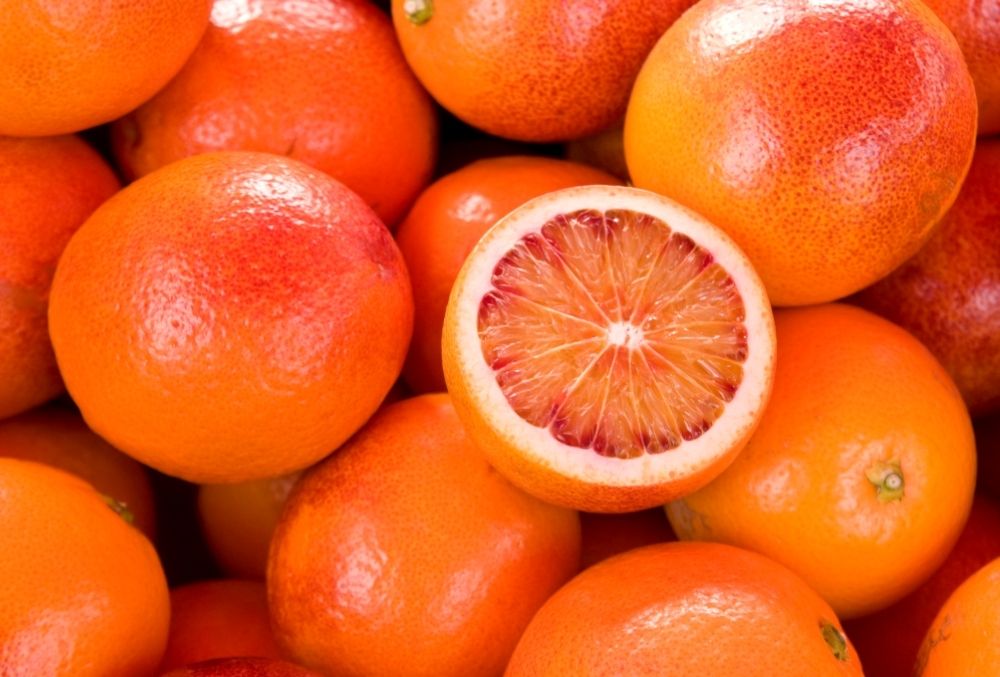
1. Mandarin
The mandarin orange is classified as a species of orange. It is considered to be a sweet variety of orange.

Mandarins are recognized for their sweet flavor and sweet fragrance, they are also considered to be relatively easy to peel.
The mandarin orange can commonly be found growing naturally in tropical and subtropical regions.
2. Tangerine
The tangerine is often considered another type of orange, however botanically it is classified as a separate species of orange and is instead considered to be a variety of the mandarin orange.
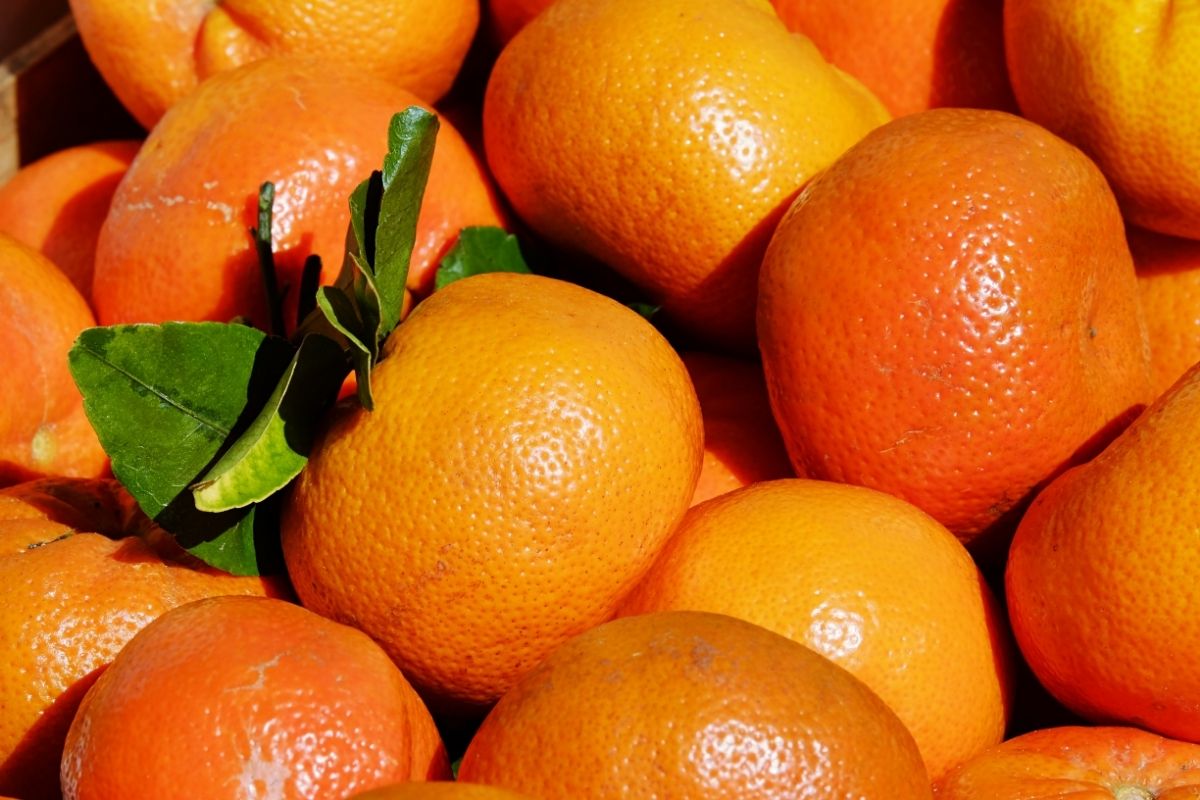
The tangerine fruit is a citrus fruit that is native to Tangier but is widely cultivated internationally, especially across America. The tangerine is recognized for its sweet, but slightly sour flavor and strong citrus fragrance.
RELATED: In the Sky With Diamonds: 12 Different Types Of Tangerine Trees
3. Kumquat
The kumquat fruit is a fruit that is produced by a flowering kumquat plant that is native to China. The kumquat is often mistaken for an orange due to its shape and color, however, it is significantly smaller than the common orange as it is the size of an olive.
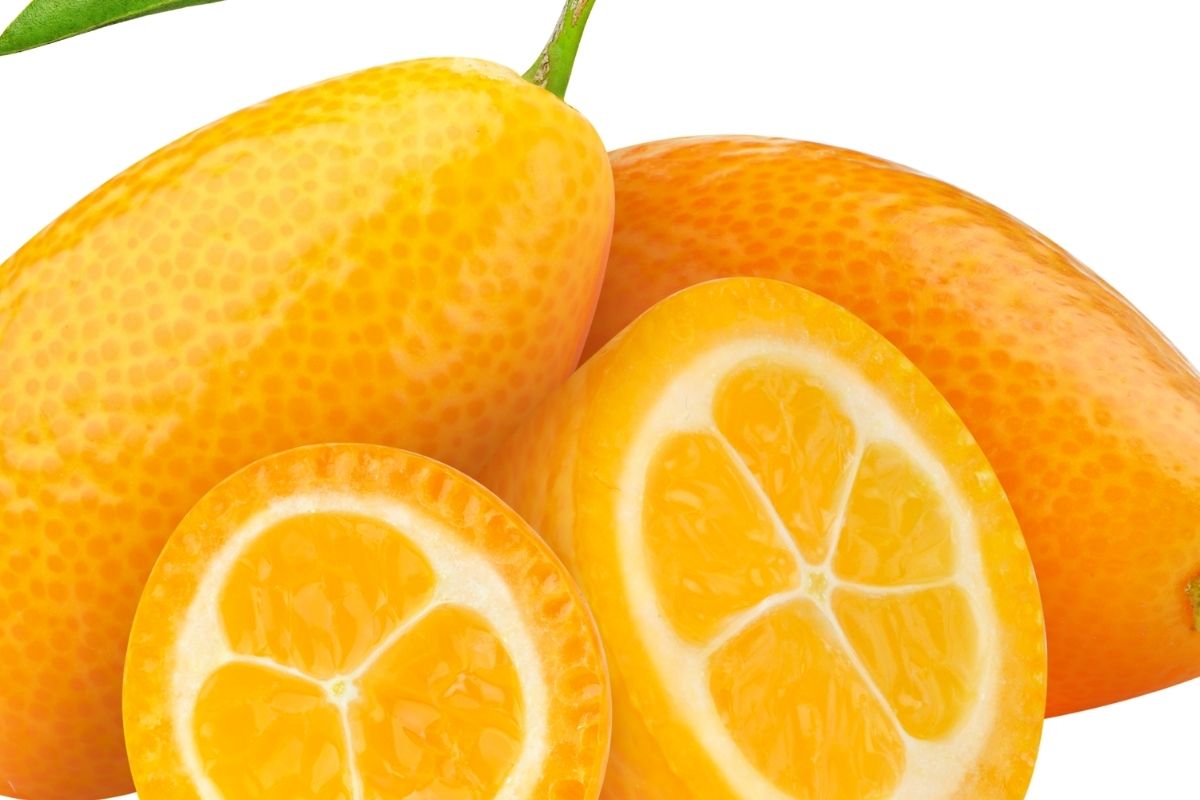
Unlike many citrus plants that thrive in subtropical climates and warmer temperatures, the kumquat is considered a hardy plant that thrives in cooler regions.
4. Persimmon
The persimmon fruit is often mistaken for a tomato due to its similar appearance and glossy orange-red skin. The persimmon fruit is edible and offers a uniquely sweet and slightly tangy flavor with a high tannin content.
Due to its distinct flavor, the persimmon fruit is widely cultivated. Though not considered a berry, the persimmon fruit is botanically classified as a berry.
The persimmon fruit is native to China and continues to be widely cultivated for commercial consumption.
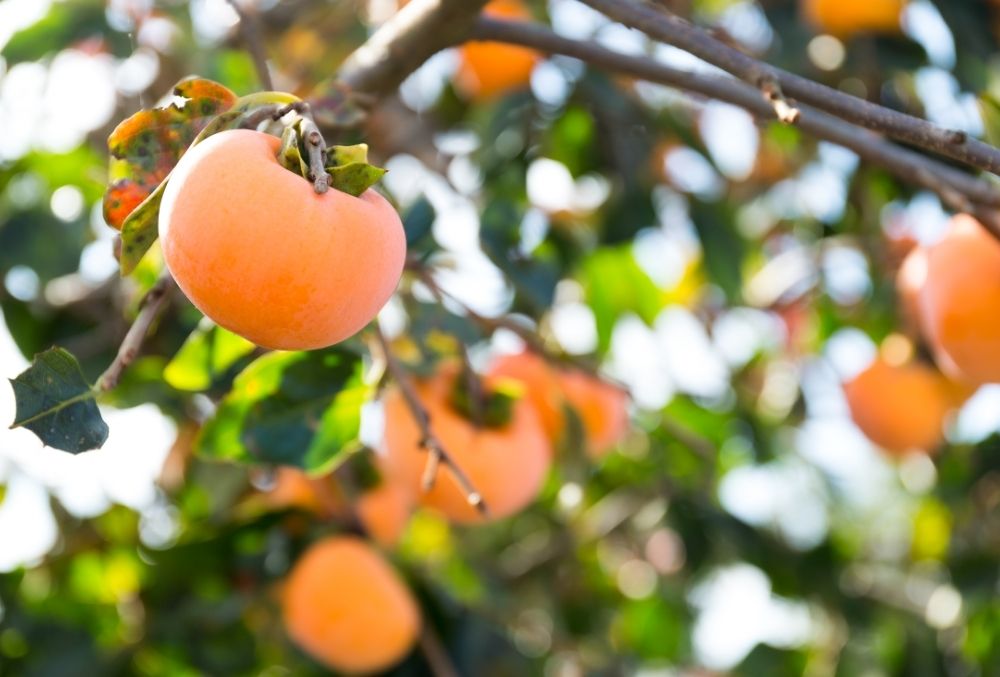
5. Apricot
The apricot fruit is a popular fruit that is classified as a plum species, but is also commonly classified as a stone fruit and is considered to be similar in texture to the peach.
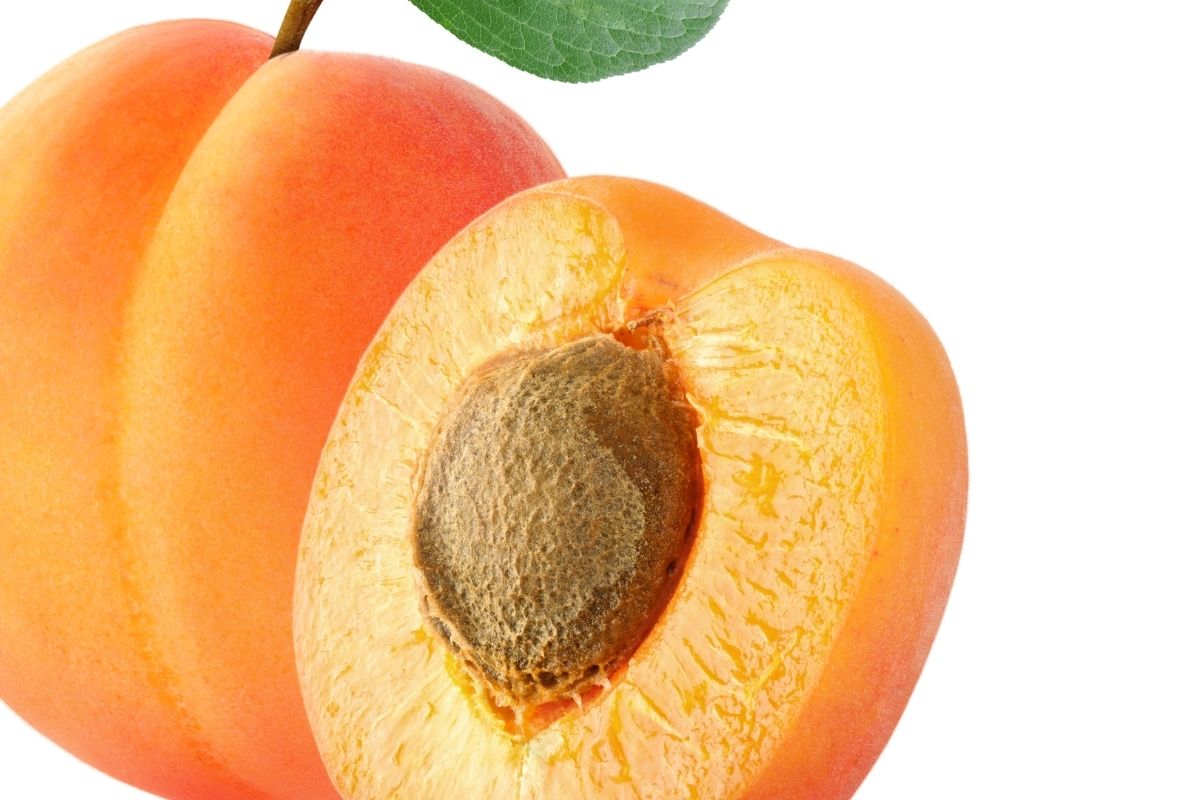
The apricot is recognized for its distinctive sweet floral taste and fragrance, and soft, almost fuzzy orange skin. The apricot offers a sweet-tart flavor and is commonly used for culinary purposes.
6. Peach
The peach fruit comes from the Prunus persica tree which is native to Northwest China. The tree produces the edible peach fruit which is a part of the rose family which includes fruits such as the apricot, cherry, and plum.
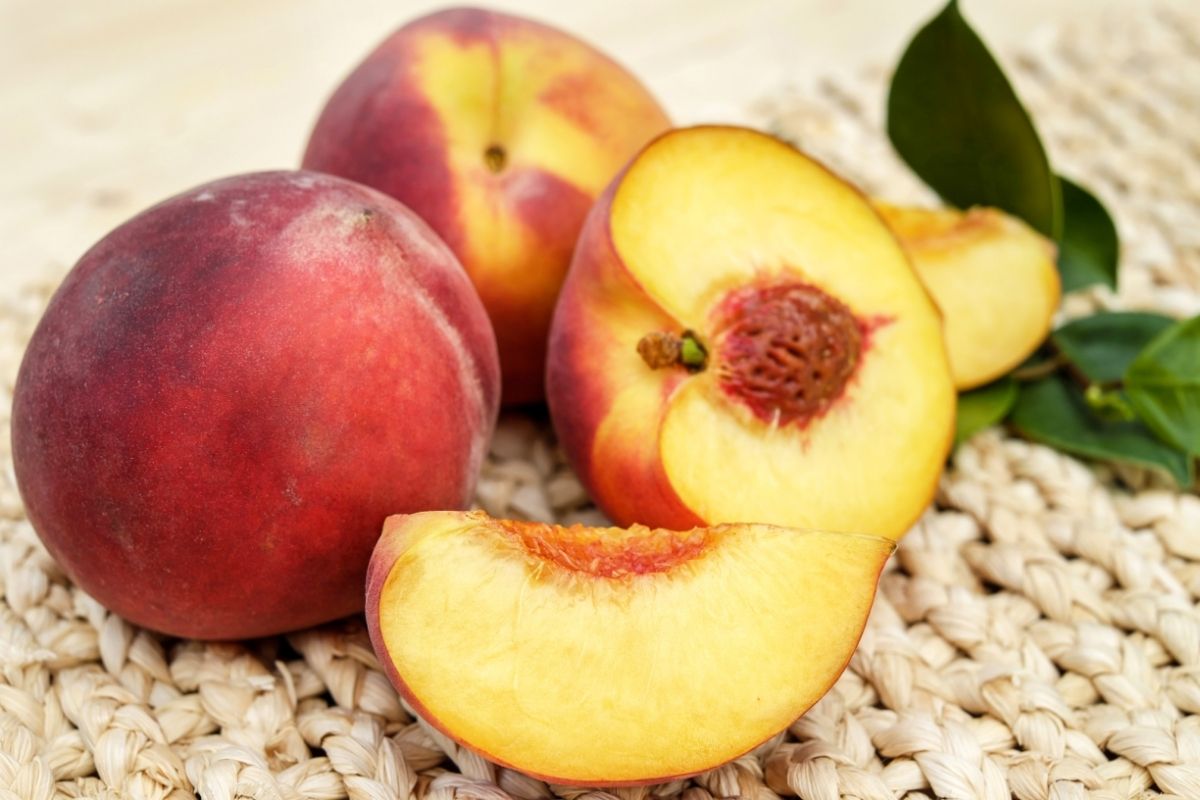
The peach fruit is commercially cultivated internationally. The fruit consists of juicy orange flesh with a sweet and floral flavor. Though characterized as being similar to a nectarine, the peach fruit can be identified by its fuzzy peach-pink skin.
7. Cantaloupe Melon
The cantaloupe melon is a widely cultivated fruit that consists of sweet orange flesh. Though the cantaloupe melon isn’t characterized as the juiciest melon, it is highly nutritious and hydrating.
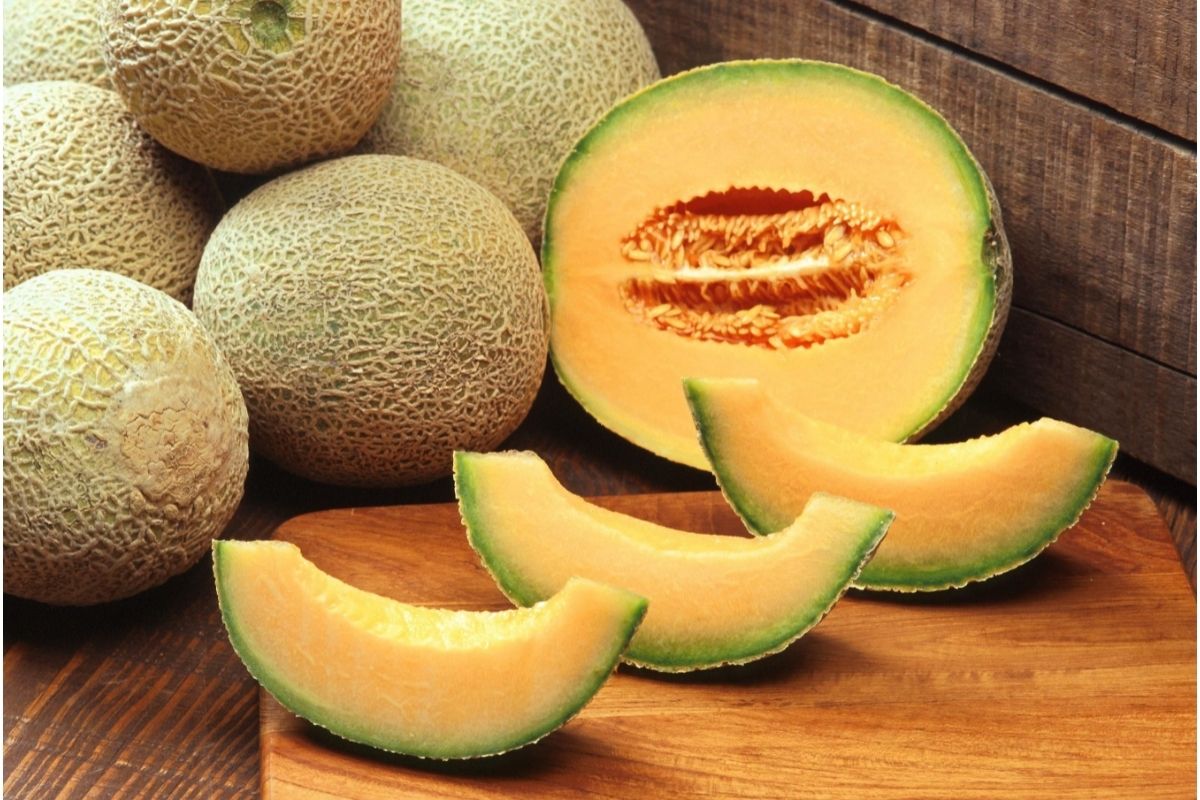
The cantaloupe melon is relatively spherical and consists of a thick green speckled rind and an orange syrup-tasting flesh. The fruit is native to South Asia and Africa and weighs up to 5 kgs.
8. Mango
The mango is a widely commercially cultivated fruit that offers a distinctively sweet, nectar flavor. The fruit is produced by the tropical Mangifera indica free.
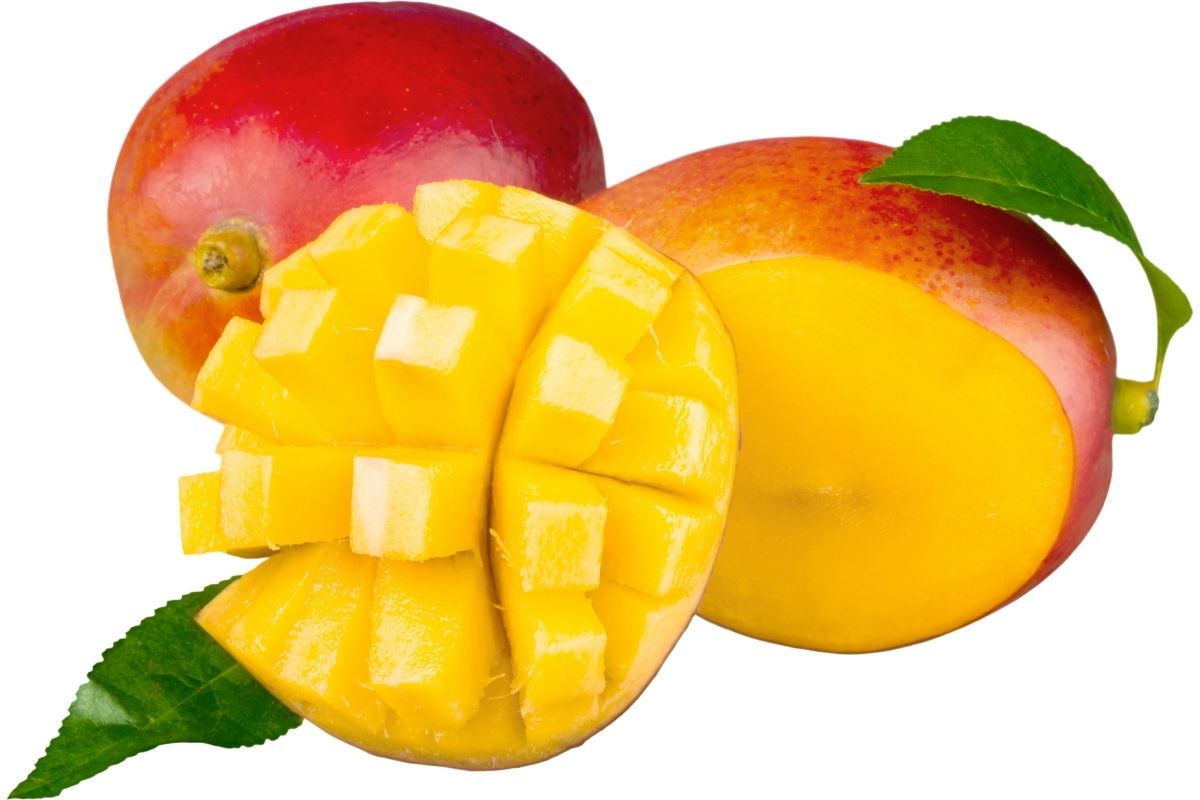
Mangoes are recognized by their unique kidney shape and orange edible leathery skin and juicy pulp. When ripe, the mango fruit produces a sweet scent. The mango contains a single giant seed known as the mango pit.
9. Papaya
The papaya fruit, also known as pawpaw, is a fruit of the Carica papaya plant.
Though there are 22 species of the papaya plant, different papaya fruit varieties can be recognized by their sweet and creamy flesh similar to the texture of avocado and contain its egg-like glossy black seeds.
The papaya fruit is considered a berry and is native to the tropics of America.

10. Orange Pepper
The orange pepper, also known as the sweet pepper, is a fruit of the Capsicum annuum plant is characterized as chili pepper, though sweet in flavor.
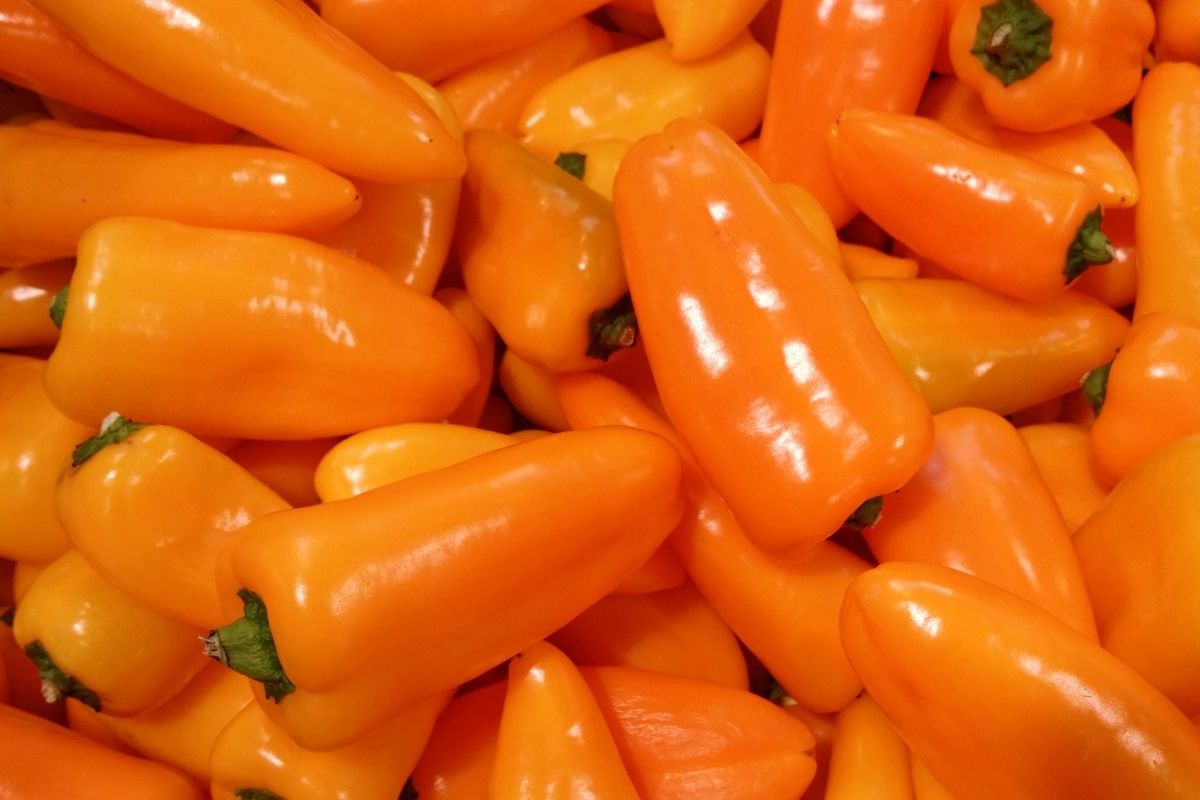
The pepper fruit can be found in a variety of colors and can commonly be found in orange, red, green, and yellow. Peppers are native to South America but are widely commercially cultivated.
11. Orange Tomato
The orange tomato is a unique variety of tomato fruit. Not only is it unique in the color of its skin, but it also produces a distinctive flavor and scent.
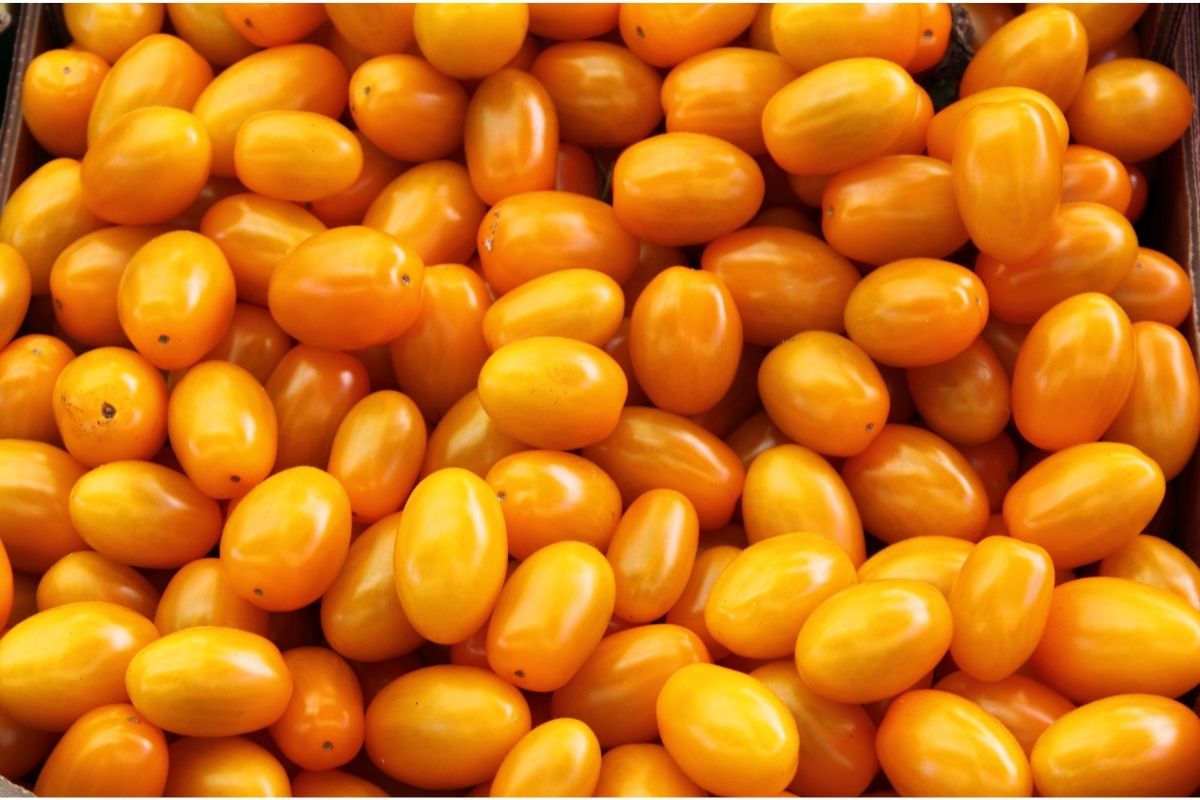
The orange tomato, though similar in shape, is considered to be larger than the common tomato and consists of a tart and slightly acidic flavor. The orange tomato is classified as a species of heirloom tomato and is native to Amana.
RELATED: What Is Eating Holes in Your Tomatoes? | Causes and Solutions
12. Lucuma
The lucuma fruit comes from the species of Pouteria lucuma tree which is native to Bolivia, Ecuador, Peru, and Chile. The plant of the lucuma fruit is classified as an evergreen tree.

The fruit produced is a globe shape and consists of a thin but russet skin and an orange pulp with a dry texture. Its flavor is said to be similar to a cooked sweet potato.
13. Kiwano – African Cucumber
The kiwano fruit, commonly known as the African horned cucumber, is a unique vine fruit that is classified as a member of the melon and the cucumber family.
The fruit has a distinctive thick spiked orange rind similar to the texture of a watermelon. Inside the fruit is a cucumber-like pulp filled with seeds that taste similar to a cucumber and a similar texture to a passion fruit.
The fruit is native to southern Africa and can be found across several regions including Zimbabwe, Zambia, Botswana, and Namibia just to name a few.
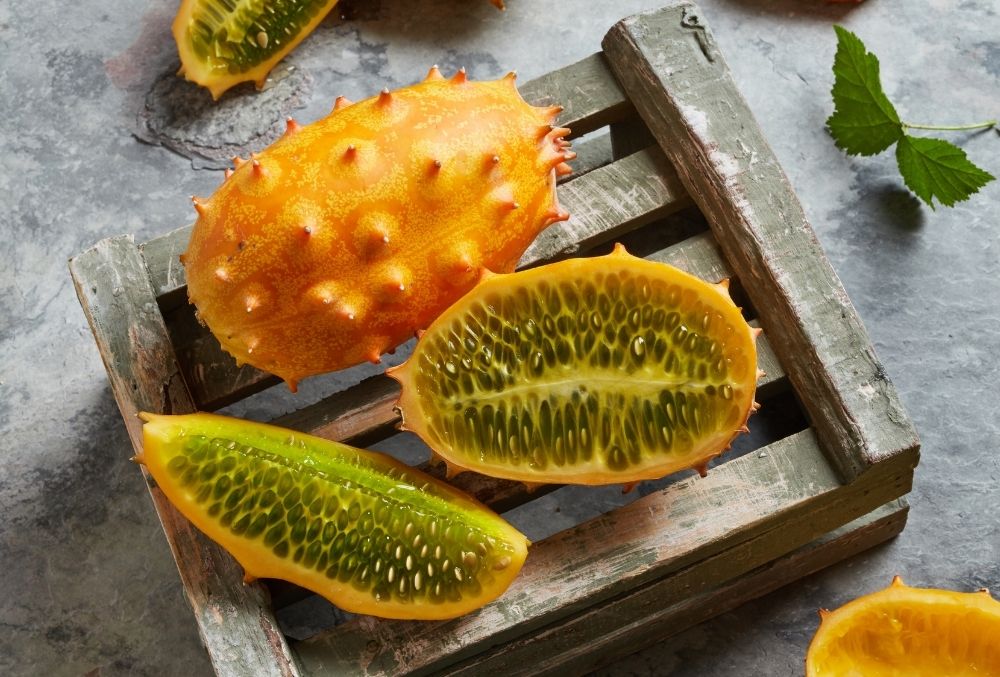
14. Gac Fruit
The Gac fruit is classified as a perennial fruit that is a member of the melon family. The plant can be found growing in southeast Asia and north-eastern Australia.
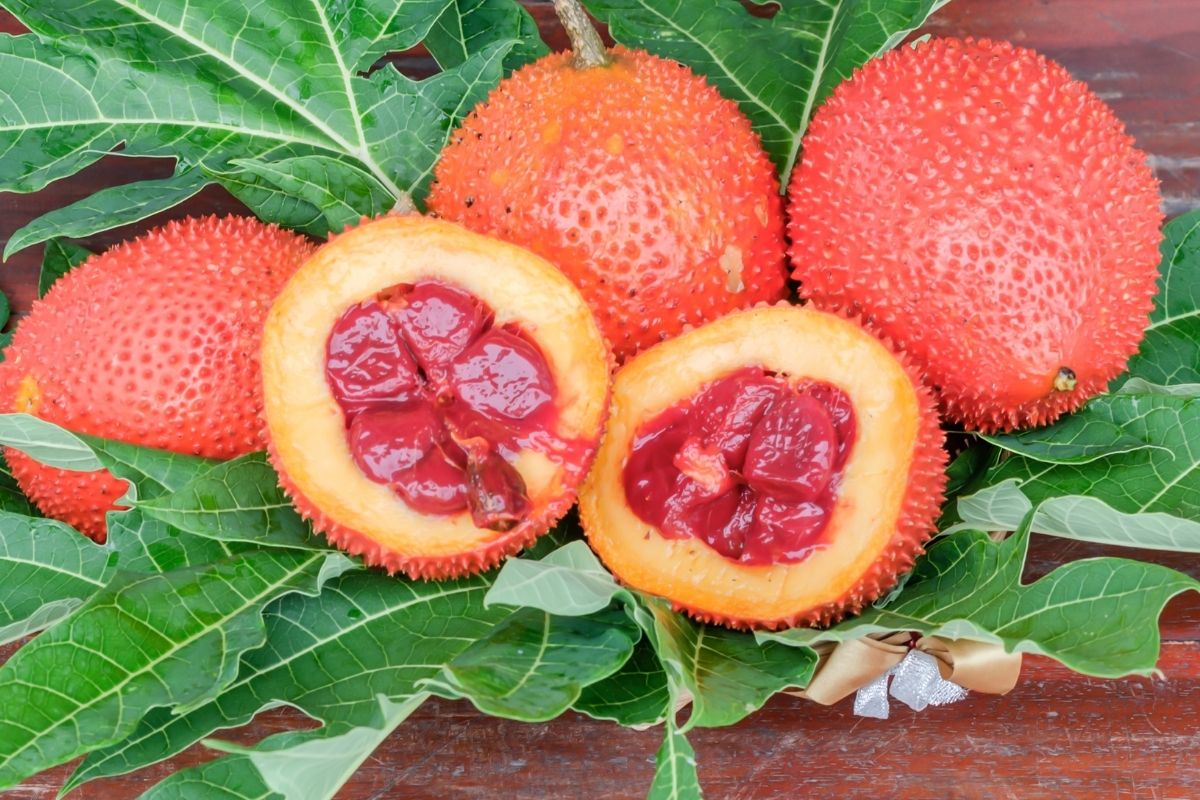
The fruit consists of a thick orange-red skin. The oblong-shaped fruit is similar to an orange in its exterior appearance. However, the internal part of the fruit consists of a yellow fruit with red seeds that taste the sweet-mild flavor.
The gac fruit is commonly used for culinary purposes but is also used to make traditional medicines.
15. Poha
The poha berry, scientifically known as the Physalis peruviana, is a fruit that is classified as a member of the nightshade family. Commonly known as the gooseberry, the poha is native to tropical regions of Colombia, Peru, and Ecuador.
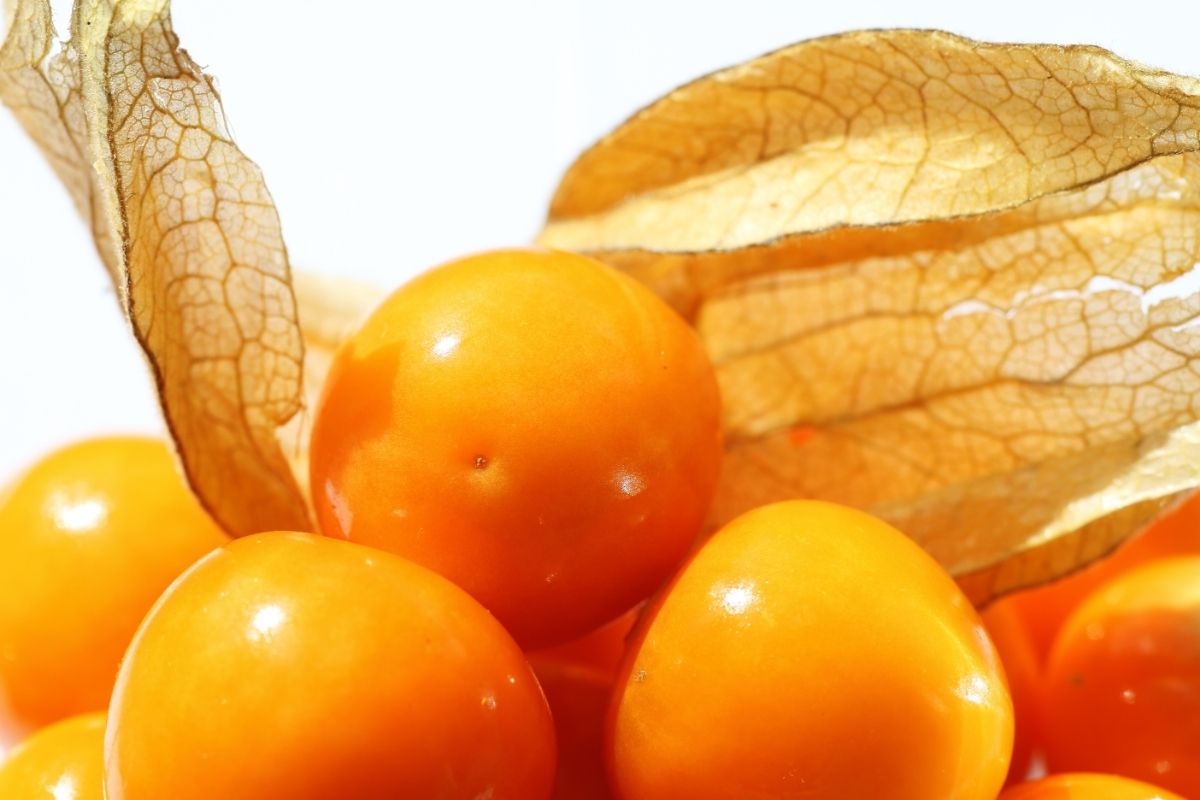
The poha berry can be recognized by its bright and glossy orange skin that resembles a cherry in both size and shape, and looks somewhat like a miniature orange tomato. The fruit offers a sweet-tart flavor and a grape-like texture. The unique berry is covered by a thin wafer husk.
16. Salmonberry Fruit
Have you ever tried a salmonberry? Scientifically known as Rubus spectabilis, the salmonberry is classified as a member of the rose family.
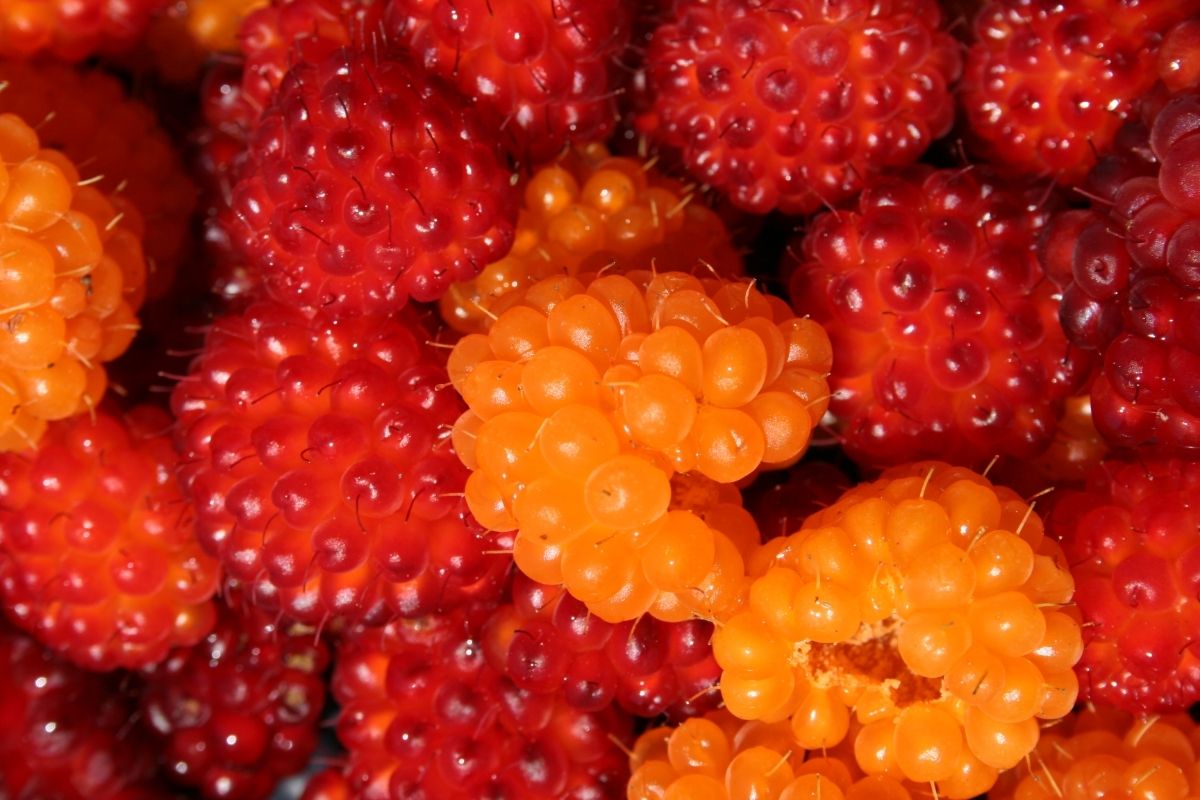
Resembling a raspberry and blackberry in their structural appearance and flavor, the salmonberry is characterized as a bright yellow-orange berry. The salmonberry is native to North America and can be found growing in colder regions.
17. Strawberry Tree
Scientifically known as Arbutus unedo, the strawberry tree is a unique flowering plant that is native to the Mediterranean and Europe.
The strawberry tree is recognized for producing a variation of orange-red fruit that resembles a cross between a strawberry and the outer shell of a lychee fruit in its shape. The strawberry tree berry consists of edible red flesh that is popular amongst pollinators.

Though called the strawberry tree berry, the fruit from the tree doesn’t actually taste anything like a strawberry. Though it has a berry quality to it, it is considered to taste more like anise and it consists of a tropical sweet-tart flavor and a bitty texture.
RELATED: Tall and Sweet: The Ultimate Guide to Strawberry Trees
Final Thoughts
So there you have it, an extensive guide to some awesome orange fruits. Next time someone mentions an orange fruit, you’ll be able to think of something much more exciting than the common orange.
We hope you learned something from this article, here are other articles that you can learn from:
14 Fruits With Seeds (Including Pictures)
Pumpkins: Growth Time and Stages of Development From Seeds To Fruits







